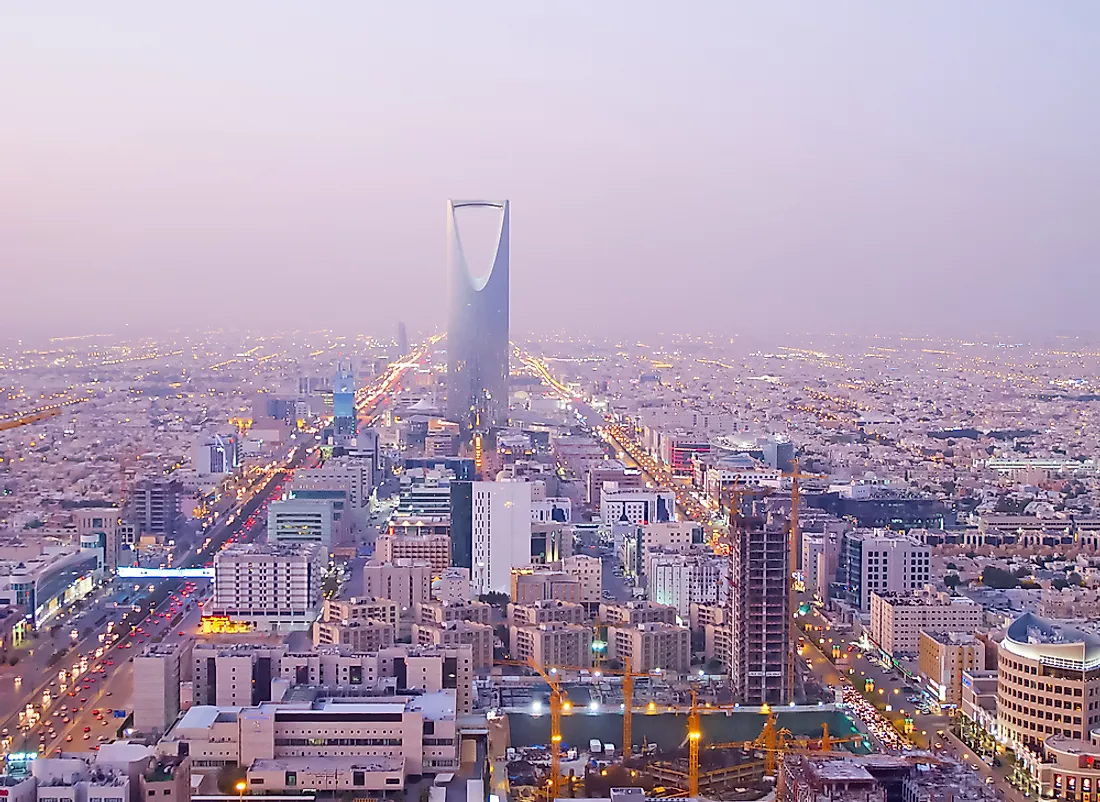What Is the Capital of Saudi Arabia?

Saudi Arabia is an independent Arab state located in the Arabian Peninsula of Western Asia. It is the largest country in the Middle East and the second largest Arab country, after Algeria. Riyadh is Saudi Arabia's largest city and country's administrative capital. The name Riyadh was derived from the plural form of the Arabic word "rawḍah," meaning gardens or meadows. The city also serves as the capital of Riyadh Province and is situated near the center of the Arabian Peninsula. Riyadh rapidly grew from an enclosed desert village into a modern cosmopolitan city, and later became the capital of Saudi Arabia in 1932.
History of Saudi Arabia's Capital
In the Pre-Islamic era, Riyadh was named Hajr and served as the capital of the Al-Yamamah province, whose governors controlled most of central and eastern Arabia. Hajr later experienced a long period of decline and was eventually broken up and subdivided into a series of settlements and estates. In the 14th century, Ibn Battuta, a renowned North American scholar and explorer, visited Harj and described it as a city of canals and trees. Later in the 17th century, Ibn Dawwas, a refugee from a neighboring village took control of Harj and built a single wall encircling the various oasis towns into a single city named them Riyadh.
During the mid-20th century, Riyadh grew from an isolated desert town into an expansive metropolis. King Shah Saud rose to power and modernized the city by building a royal resident district in 1950 and establishing new settlement patterns and incorporated American grid-like squares resembling a chessboard. King Shah Saud then connected the neighborhoods with main roads. Despite a series of terrorist attacks during the 1990s, Riyadh mushroomed to a modern city and is the administrative capital of the Kingdom of Saudi Arabia. Most notably, Riyadh has become the kingdom's economic hub of the kingdom and has attracted the headquarters or large regional offices of prominent national and multinational companies.
Geography of Riyadh
Riyadh is situated on the eastern Najd highland at an elevation of 1,950 feet above sea level. The highland is dominated by a rocky plateau that gives rise to a chain of escarpments, including the Jilh Al-Ishar, Al-Khuff, and, the Ṭuwayq Mountain, which form the backbone of the Najd region. Due to its location away from water bodies, Riyadh experiences desert climate with temperatures reaching highs of 100 °F in summer and lows of 50 °F in winter. Notable landmarks in the metropolis include the Riyadh TV Tower, Burj Al Faisaliyah, Burj Rafal, and the Kingdom Tower, which are the highest skyscrapers in the kingdom.
Demographics of Riyadh
Riyadh is currently home to approximately six million people, which is a dramatic increase from its population of 18,000 at the beginning of the 20th century. The population drastically grew in the 1970s and 1980s when the city experienced rapid economic growth and attracted international immigrants as foreign laborers. The city’s 4,000 mosques and numerous souks are significant, as most inhabitants in the city, as well as Saudi Arabia in general, are Muslim and practice numerous Islamic social norms including the segregation of sexes and family privacy. Women do not enjoy the same rights as men in Saudi Arabia and have historically experienced significant discrimination. For example, women were forbidden from driving until June 2018.











